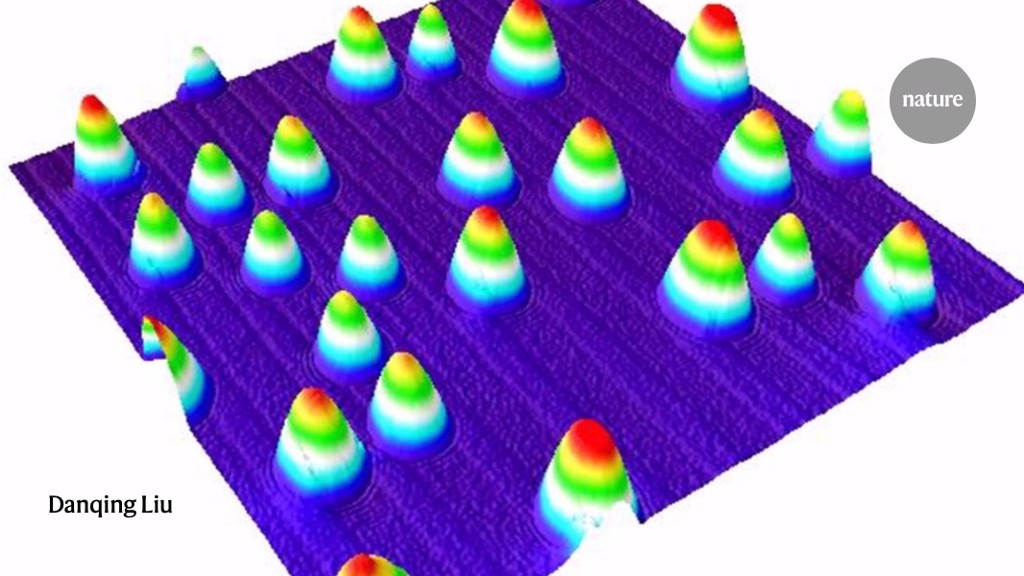Radio waves trigger a porous surface (blue) to ‘sweat’ liquid droplets (multicoloured peaks). The tallest droplets (red-tipped) are 800–1,000 nanometres high. Credit: Danqing Liu
Materials science
A synthetic coating can ‘sweat’ droplets of fluid containing ibuprofen or other compounds when stimulated by radio waves.
Coatings that can secrete fluids on demand could keep themselves clean or administer medicines to a wound. Danqing Liu at the Eindhoven University of Technology in the Netherlands and her colleagues created such a coating from liquid-crystal molecules, which can move like a liquid but, when exposed to an electric field, align themselves neatly like a crystal’s atoms.
The fluid that serves as sweat is stored in numerous micrometre-sized pores surrounded by the long liquid-crystal molecules, which stand vertically on their ends. The coating rests on a layer of glass embedded with metallic electrodes that generate radio waves similar to those produced by a Wi-Fi router.
When the radio waves are turned on, the long liquid-crystal molecules twist to orient with the waves’ direction of travel. This twisting motion wrings liquid out of the coating’s pores. The coating sweats more as the radio waves become stronger.
After the radio waves are switched off, the coating re-absorbs any sweat left on its surface in seconds.

